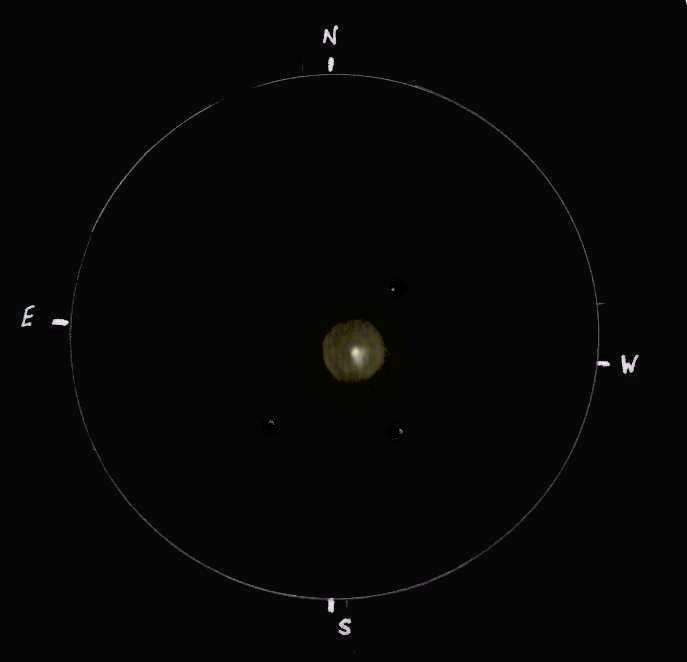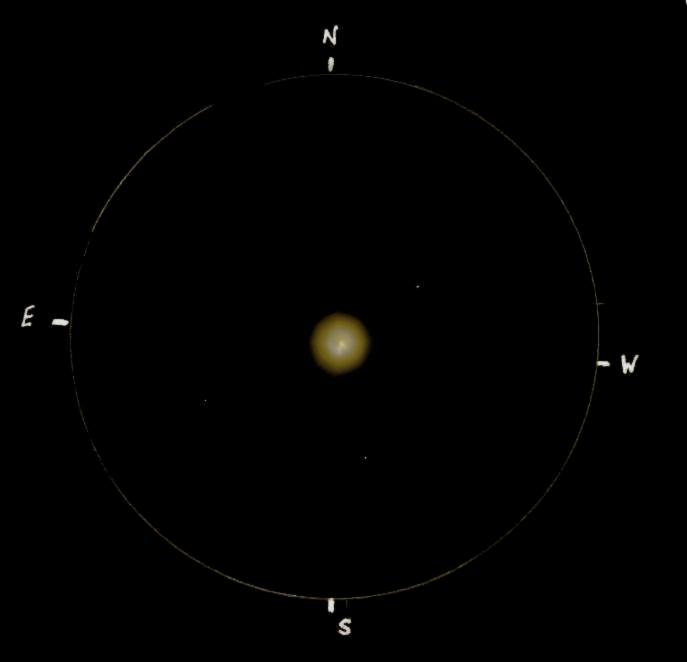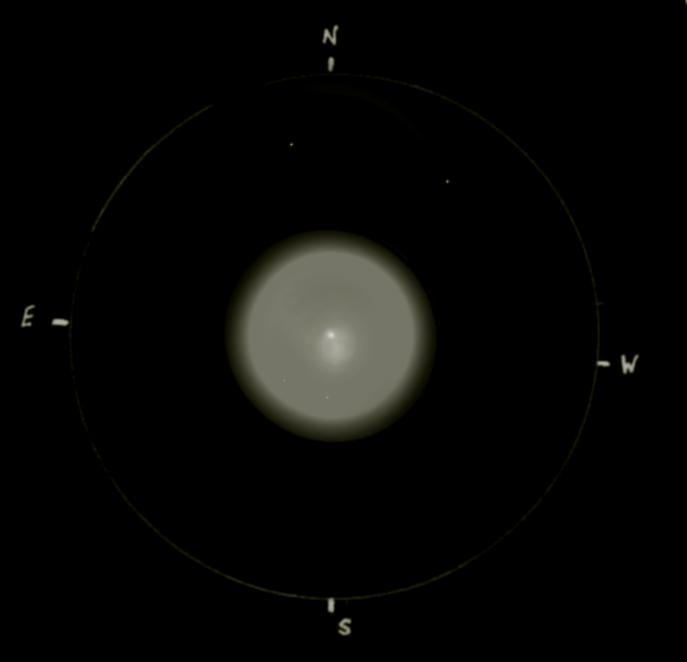Many veteran comet observers regard the outburst of Comet Holmes (17P)
as one of the oddest sights they have seen. Not only was the sudden
brightening unprecedented in modern times, but the perspective we have
of this distant comet gave it an appearance all its own. From night to
night you can see it growing in size and yet, due to the dimming of the
expanding coma, it maintains a fairly constant brightness when viewed
naked eye.
Initially, the first images of this comet online indicate that is
difficult to capture the visual appearance with our imaging technology
and sketching is proving to be a satisfactory way to convey the visual
perspective at the eyepiece. I quickly opted for the sketching option,
but soon found that I had trouble getting a perfectly round coma that
also conveyed the contrasty ‘pop’ that this comet presented that first
night after announcement of the outburst. So instead of just using
image processing programs to get my onscreen-sketch looking like my
on-paper sketch, I decided to try to do more than embellish it and do
the sketch entirely with the image processing program. I refer to this
as digi-sketching.
So here is a series three ‘sketches’. The first is my original ‘paper
sketch’ captured and rendered to reflect what I had on paper. It was
graphite on paper with the colour added digitally. It was
disappointing to me in that the brightness, contrast and the colourful
‘pop’ factor of this weird sight in northern Perseus was not entirely
captured. The second sketch is my digi-sketch version of that same
night based on my original sketch. I soon appreciated that I could
quickly and easily correct some failings of the original. The third
sketch is from three days later and is done to the same scale showing
the dramatic changes that took place in this short span of time. The
image processing program that I used for teh last two images is a PC
version of iPhoto that came with an old scanner. This makes me wonder
what is possible with some of the newer and more capable image
processing programs.
All three sketches were done from my view through a 12.5 inch home-made
Dobsonian using a Discovery mirror. Binoviewers 23mm eyepieces and a
2x barlow gave a magnification of something well over 250x. The first
two sketches are a result of my observations on the night of October
24th at around 10:45 CDT (UT 3:45 Oct 25th 2007). The third sketch was
done on October 27 CDT at 11 PM (UT 4:00 on Oct. 28th 2007). Note the
two 11th magnitude stars that could be seen shining through a relatively
colourless coma in this third sketch (bottom/south part of the coma
about 1/4 the way in). Since the equipment is constant for both nights,
the images can be directly compared for size and this gives one an idea
of just how quickly this comet grew in size.
This has to be one of the oddest and most unusual events in comet watching.
Gerry Smerchanski




Lovely series Gerry and you are quite right this is something very special and unusual. The skies over the UK finally cleared last giving us our first look. Wow what a stunning object! To me it looked like a large pearly coat button. I was beguiled by this spectacle in binoculars, the 80mm finder and the observatory 14″. Of course it is very naked eye too with a hint of fuzziness to be detected with the eye.
Looks like we are all going to be getting through some paper on this one!
Enjoy, Dale
Gerry,
Fantastic sketch sequence and descriptions. I saw it for the first time Saturday night, looking as you sketched it in the last drawing.
Excellent work.
Frank 🙂